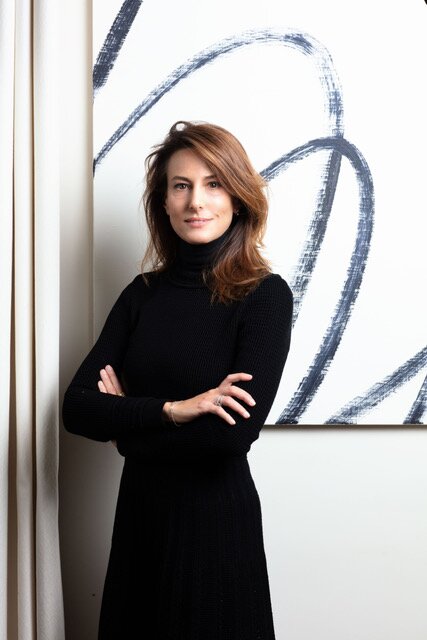While in previous years, Asia Now has focused on East and South Asia, its seventh edition taking place from 21 to 24 October 2021 in Paris turns its attention to West Asia. If it’s looking to Iran in particular this year, it’s because its mission has always been to explore the richness of the Asian contemporary art world and to put artists who are part of the global conversation on the radar. It will give visibility to Tehran-based galleries +2, Ab-Anbar, Aaran, Azad, Bavan, Etemad, Mohsen and Saradipour that will showcase 20 artists living and working in Iran, whose work has rarely been shown to French or European audiences, while international galleries like Félix Frachon and Praz-Delavallade have also chosen to introduce Iranian artists.
Even with this emphasis on Iran, the fair remains a platform encompassing all Asian scenes thanks to the quality and variety of the participants, from Singapore-based Yavuz Gallery and those with spaces in Asia such as Danysz, Dumonteil Contemporary, Tamenaga, HdM and Over the Influence to established Parisian galleries like Nathalie Obadia, Perrotin and Templon, despite their parallel presence at the FIAC, Paris’ main contemporary art fair held each autumn. I sit down with Asia Now’s French co-founder and director, Alexandra Fain, to find out what to expect from this year’s fair.
How did the idea to create Asia Now first come about, and how has the fair evolved since you launched it in 2015 to its 7th edition in 2021? Have you been able to dispel some of the stereotypes surrounding Asian contemporary art?
Asia Now came overall from the realisation that talented Asian visual artists were under-represented in Western cultures. Year after year, Asia Now has pursued its mission of casting a light on emerging artists through galleries that were largely unknown in France, while at the same time welcoming a growing roster of established artists represented by both international and major French galleries.
Works by many artists well known in the Asian art scene now figure in the collections of major art institutions or museums and in important exhibitions, a reassurance to many buyers and collectors. Artists from lesser-known art scenes may also be discovered at Asia Now. Since its inception and over the years, Asia Now has taken the opportunity to reshape the collective consciousness and break down Asian contemporary art stereotypes, which is why we are collaborating with Asian institutions of the Parisian scene, such as the Guimet Museum and Cernuschi Museum.
What are some of the highlights of this year’s edition?
This year’s major highlight is “Tehran Now”, the first platform fully dedicated to Iranian art. From a geographic perspective, the fair has expanded its scope to include West Asia, welcoming artists who live and work in Iran for the first time. Among its 40 participating international, European and French galleries, some of which will show works by artists from the Iranian diaspora, the fair counts eight galleries based in Tehran that will be exhibiting at the fair for the very first time. Shedding light on underrepresented forms of contemporary art in the Western world has always been Asia Now’s prerogative.
Which up-and-coming Asian contemporary artists are the ones to watch at Asia Now?
That is a tough question! From the standpoint of shifting territories, Asia Now has invited three curators this year. To explore the Chinese concept of “shun”, meaning “to espouse, to go with the flow”, Nicolas Bourriaud, former director of a number of French public institutions, historian, art critic and independent curator, has invited several artists, such as the talented Hu Xiaoyuan. Curator Kathy Alliou, who delights in the hybridisations that redefine established notions of tradition and know-how, invited artists such as Odonchimeg Davaadorj.
Odile Burluraux, curator at the Modern Art Museum of Paris, proposes a programme focusing on Iranian female video artists, such as Atousa Bandeh Ghiasabadi. Icy & Sot (Danysz Gallery), Tahmineh Monzavi (Galerie Félix Frachon), Tom Polo (Yavuz Gallery) and Sepand Danesh (+2 Gallery and Galerie Nouchine Pahlevan), who’s representing France at the Expo 2020 Dubai, are also artists to watch, as well as Eko Nugroho. He has been presented at Asia Now since 2015; we love his work and social commitment to his local community.
Tell me about your off-site programming.
For the third consecutive year, “L’Asie Maintenant” will open on 21 October at the Guimet Museum. The exhibition will feature the work of Vietnamese-born artist Thu-Van Tran, while a selection of works by the Vietnamese-born Huong Dodinh, curated by Hervé Mikaeloff, casts a bright light on an artist whose oeuvre remains largely unknown despite an artistic practice that spans over 50 years.
Do you believe with our current situation today, in the midst of the Covid-19 pandemic, that boutique regional art fairs such as yours can thrive? Has the role of art fairs in the larger art ecosystem changed?
Faced with what we have just lived through and continue to experience, it is clear that each one of us is in search of greater meaning and an organic, intuitive connection to the world. In the context of an art fair, the issue can no longer be one of pure “acquisition positioning”, but rather of a much more collectively-minded feeling. At Asia Now, we seek to understand how to play this new role, without being nostalgic or apocalyptic, but with positive pragmatism. Already, we feel that the world will ask of us, once again, to be less far apart, to return to the earth, to revive our sense of touch and to feel alive again.
